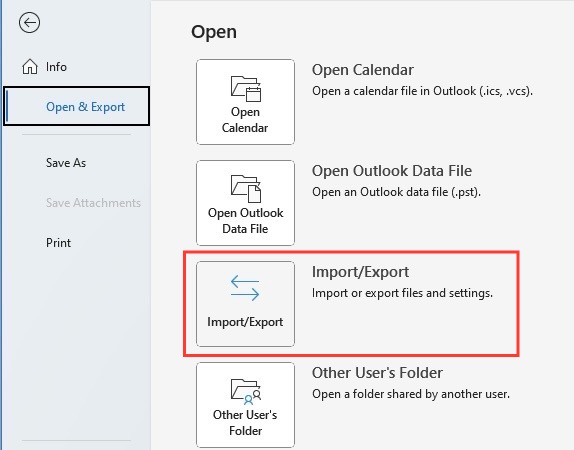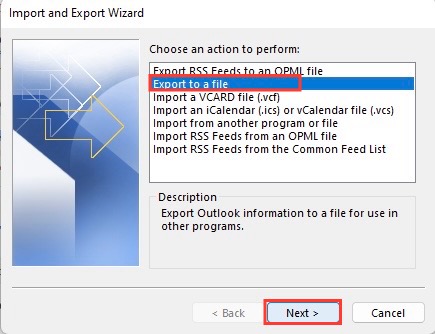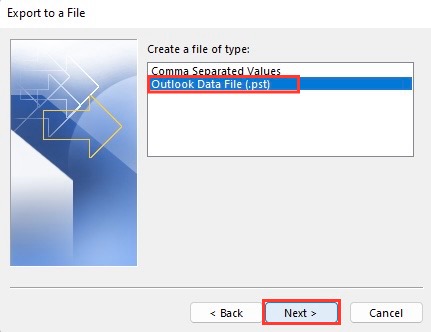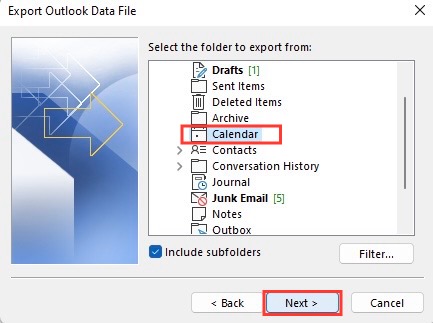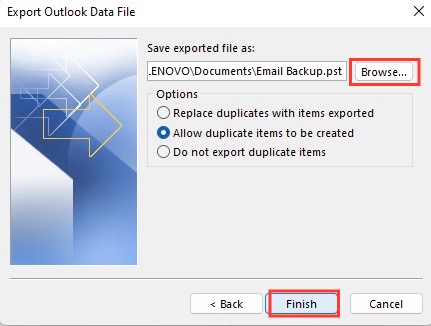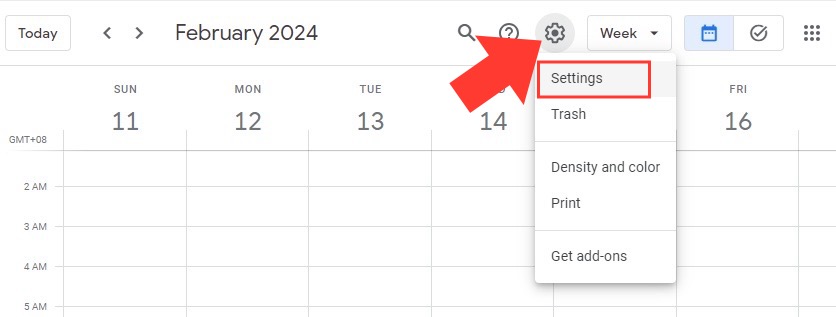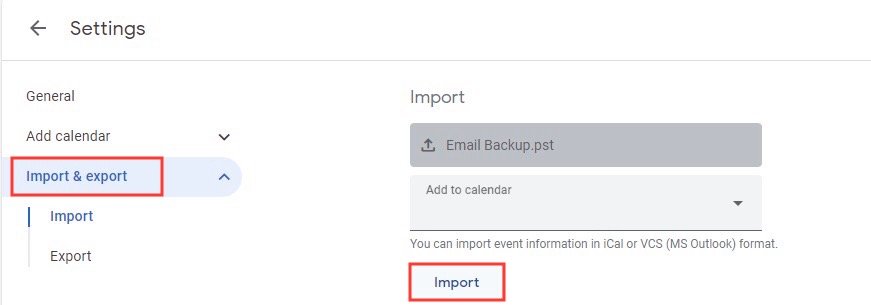Outlook and Google Calendar: A Dynamic Duo
Outlook Calendar and Google Calendar have emerged as the two zeniths in the realm of digital scheduling. Both offer robust features and are trusted by millions of users worldwide. Where Outlook Calendar is often synonymous with professional and enterprise environments, Google Calendar shines due to its simplicity and deep integration with other Google services. Learning how to sync Google and Outlook calendars can offer you a seamless time management experience.
Table of Contents
Understanding the Benefits
Maintain Accuracy Across Platforms
The synchronization between Google and Outlook Calendars is more than a mere convenience—it’s a strategy for error reduction. With both calendars reflecting the same information, the risk of double-booking or missing out on important appointments diminishes significantly. When updates or cancellations occur, they’re mirrored across both platforms, ensuring that your schedules are accurate, up-to-date, and reliable, regardless of the device or service you’re using at any given moment.
Getting Started with Syncing
Prerequisites for Calendar Syncing
Before you can start syncing your calendars, there are a few prerequisites you’ll need to check off:
- Compatible Software Versions: Ensure that you’re running supported versions of both Outlook and Google Calendar. Outlook 2007, 2010, 2013, and 2016 are known to have syncing capabilities.
- Internet Connectivity: A stable internet connection is vital as syncing is an online process where information is transferred between servers.
- Correct Account Credentials: Have the correct login details ready for both your Google and Microsoft accounts, as they will be required to authorize the synchronization.
- Calendar Visibility: Your Microsoft calendar should be set to a visibility status that allows external platforms to access it.
- Updated Software: It’s generally a good practice to have the latest updates installed for both applications to ensure compatibility and new feature availability.
Taking care of these prerequisites will set the stage for a hassle-free setup of syncing Outlook with Google Calendar.
Choosing Between Syncing and Importing
When determining the best way to align your calendars, you’re presented with two primary choices: syncing or importing.
Syncing is a dynamic process where two calendars continuously update each other as changes are made. This option is ideal for those who need real-time updates across both platforms.
Importing, on the other hand, is a static method where data from one calendar is brought into another as a one-time action. Any changes made post-import will not be reflected on the other calendar unless a new import is conducted.
The choice hinges on your needs:
- If you have an active schedule with frequent updates and require immediate visibility of these changes, syncing is recommended.
- If your calendar changes are infrequent or you just need a one-time transfer of information, importing might suffice.
Remember that importing often has limitations like lack of privacy controls, delayed updates often exceeding 24 hours, and can be unreliable and cumbersome if managing multiple calendars. Syncing, while occasionally more complex to set up initially, usually provides a more dependable and fluid experience.
Step-by-Step Guide to Sync Outlook with Google Calendar
Export Your Outlook Calendar
Exporting your Outlook Calendar is the first step towards a consolidated schedule. Follow these steps to create a .pst file which contains your calendar info:
STEP 1: In Outlook, go to File > Open & Export > Import/Export.
STEP 2: Choose Export to a file from the list of actions and click Next.
STEP 3: Select Outlook Data File (.pst) and proceed by clicking Next.
STEP 4: Highlight the calendar you wish to export. Use the checkbox option if you want to include all subfolders.
STEP 5: Decide on a location on your computer to save the .pst file and hit Finish.
You may set a password for your exported file for additional security, but it’s optional.
After you export your Outlook calendar, you’re prepared to bring it into Google Calendar. Remember that exported calendar data does not automatically update; for continuous synchronization, a dedicated sync service or tool would be necessary.
Import It into Google Calendar
Once you’ve exported your Outlook Calendar, the next step is to import it into Google Calendar. Here’s a straightforward guide to get you started:
STEP 1: Sign into your Google Calendar account.
STEP 2: Click on the Settings gear icon at the top right and then select Settings.
STEP 3: On the left sidebar, choose Import & export.
STEP 4: Click on Select file from your computer, and navigate to where you saved your exported Outlook Calendar file.
STEP 5: Open the file and then choose Import.
STEP 6: If you have multiple Google Calendars, select the appropriate one to import the events into using the Add to calendar drop-down menu.
STEP 6: Confirm the import by clicking on the Import button.
After this process, your Outlook Calendar entries should now appear in your Google Calendar. Please note that this is a one-time import; changes made in Outlook after this import won’t be reflected in Google Calendar unless you perform a new import or set up a continuous sync method.
Handling Potential Synchronization Issues
Common Hiccups in Calendar Syncing
Despite best efforts, users can run into various issues when syncing calendars. Some of the common hiccups include:
- Incomplete Syncs: Sometimes, not all calendar items sync over, resulting in partial data transfer.
- Duplicate Entries: Duplication of events is a frequent glitch during the syncing process.
- Time Zone Mismatches: Incorrect time zone settings can lead to events showing at the wrong time.
- Connectivity Issues: A weak or unstable internet connection can interrupt the sync process.
- Permission Errors: Without the proper permissions, syncing may be blocked or limited.
- Software Bugs: Outdated software or unresolved software bugs can cause syncing failures.
- Server Outages: Server issues on the end of Google or Microsoft can temporarily disrupt sync services.
It’s crucial to recognize these common problems so that you can proceed with the appropriate troubleshooting steps to ensure that your calendars sync smoothly.
Troubleshooting Tips for Smooth Integration
Encountering issues when syncing Google and Outlook Calendars can be frustrating, but there are several troubleshooting tips you can employ for a smooth integration:
- Check Internet Connection: A stable internet connection is a sine qua non for syncing calendars. Verify that your connection is active and stable.
- Verify Account Credentials: Ensure that you’ve entered the correct credentials for both Microsoft and Google accounts. Sometimes re-entering your login details can resolve syncing issues.
- Visibility Settings: Check that your Outlook calendar is set to be shared or visible in order to sync with Google Calendar.
- Clear Cache and Cookies: Over time, browser cache and cookies can accumulate and sometimes interfere with syncing. Clearing them might resolve the issue.
- Restart Device: A classic but often effective solution is simply restarting your computer or device. This can clear temporary software glitches that hinder synchronization.
- Check Permissions: Ensure that both Outlook and Google Calendar have the necessary permissions to access and sync data between them.
- Update Calendars: Running old versions of software can lead to compatibility issues. Check for any updates for both calendars and install the latest versions.
- Review Error Messages: If you receive specific error codes or messages, document them. They could provide insights necessary for troubleshooting or aid in seeking support from customer service.
- Use Dedicated Sync Tools: Sometimes, using dedicated sync services or tools can provide a more stable connection between Google and Outlook Calendars than native options.
- Consult Help Resources: Both Google and Microsoft provide extensive online help resources and community forums where you might find resolutions to your specific syncing problem.
Facing synchronization problems can be a hiccup in your productivity workflow, but these troubleshooting tips are generally successful in navigating through the most common issues.
Advanced Tips for Power Users
Manage Multiple Calendars Effectively
Managing multiple calendars doesn’t have to be a challenge. With a strategic approach and the right tools, you can streamline various calendars into a cohesive unit. Here are some tips:
- Prioritize Your Calendars: Determine which calendar holds the most important events and make it your primary one, while others serve supplementary roles.
- Color Coding: Assign different colors to each calendar or event type. This visual aid helps in quick identification and categorization of calendar entries.
- Sync Intelligently: Use two-way sync for calendars that require constant updates and one-way sync for those that don’t need back-and-forth communication.
- Separate Work and Personal: Even though you’re merging calendars, maintain clear distinctions between work and personal appointments to manage boundaries.
- Use Native Features for Overlap: Both Google and Outlook have features that allow for displaying multiple calendars in a single view. Take advantage of these for overlaid schedules.
- Custom Notifications: Adjust notification settings for each calendar so you’re alerted appropriately according to the importance of events.
- Consolidate Tasks and Goals: For calendars serving similar purposes, consolidate them into broader categories like ‘work’ or ‘personal’ to reduce complexity.
- Regular Maintenance: Periodically review and clean your calendars, removing old or irrelevant calendars, to keep your system efficient.
By being methodical about how you manage your calendars, you can ensure each serves a purpose without overwhelming your view. The goal is to have a central, streamlined calendar system that helps rather than hinders your time management.
Automation Tools to Keep Calendars Updated
To ensure your calendars remain synchronized with little to no manual intervention, leveraging automation tools can be a game-changer. Here’s how you can utilize these tools to your advantage:
- OneCal: An efficient service that facilitates real-time syncing between Google and Outlook calendars. It supports both one-way and two-way syncs, making it versatile for different needs.
- Yesware’s Meeting Scheduler: Streamline booking meetings directly from your inbox with customizable meeting links, ensuring your calendar is always current.
- IFTTT or Zapier: These web-based services allow you to create automated workflows (“Applets” or “Zaps”) that can sync calendar entries between numerous platforms automatically.
- Microsoft Flow: For those embedded within the Microsoft ecosystem, Flow offers automated syncing capabilities between Outlook and different applications, including Google Calendar.
- Third-Party Sync Applications: There are various other third-party apps available that specialize in calendar synchronization. Always review security and privacy policies to ensure they are reliable and reputable.
Using automation tools not only saves time but also significantly reduces the probability of human error, guaranteeing that your calendar entries are consistent and up-to-date across all platforms.
Making the Most Out of Your Synced Calendars
Harnessing the Power of Unified Schedules
When you merge your Google and Outlook calendars effectively, you create a unified schedule that captures all facets of your life in one place. To harness the full potential of this synchronization involves a few strategic practices:
- Consolidate View: Use the integrated calendar view to monitor all your appointments at a glance, helping you to plan better and identify any scheduling conflicts.
- Accessible Anywhere: With your calendars synced, you can access your unified schedule from any device. This ensures that you’re always informed, whether you’re at work on a desktop or on the go with your smartphone.
- Event Creation and Response: Regardless of which platform you’re using, add new events or respond to invitations. They will be reflected on both calendars, saving you the hassle of double entry.
- Shared Availability: A unified schedule makes it easier to share your availability with colleagues, friends, and family, streamlining the process of planning meetings and events.
- Leverage Reminders and Alerts: Use the combined strength of Outlook and Google reminders to never miss another commitment. You can set multiple alerts for the same event if needed.
By effectively managing a unified schedule, you remove the fragmentation in your time management efforts, leading to a more organized and productive routine.
Best Practices for Consistently Updated Calendars
Maintaining up-to-date calendars across all platforms is crucial for efficient time management. Here are some best practices to ensure consistency:
- Regular Sync Checks: Schedule regular checks to ensure sync processes are functioning properly. Even with automation, systems can sometimes fail.
- Minimize Manual Edits: After setting up sync, try to avoid manual cross-platform edits that could cause discrepancies. Choose one platform as your primary for making changes.
- Understand Sync Settings: Familiarize yourself with the sync settings of your chosen tools and understand how they manage conflicts or updates.
- Manage Attendee Information Carefully: When adding attendees to events, ensure their information is correct and updated as this data is crucial for invites and notifications.
- Time Zone Awareness: Always set the correct time zone for events, especially if you’re working across different geographical locations.
- Use a Reliable Sync Service: Opt for a well-established and support-rich synchronization service to minimize sync issues and benefit from customer support when needed.
- Backup Calendars Regularly: Keep backups of your calendars so you can restore them if an error occurs during synchronization.
- Training and Support: If you’re in an organization, ensure that all team members are trained on how to use unified calendars effectively and provide resources for support.
By employing these practices, you minimize the risk of having outdated or inconsistent calendars, thus enabling you to rely on your digital scheduling without hesitation.
FAQ: All Your Queries Answered
How do I ensure my calendars remain perfectly synced?
Ensuring perfect synchronization between your Google and Outlook Calendars hinges on a blend of the right tools and diligent practices. Here are steps to maintain a flawless sync:
- Choose a Robust Sync Tool: Opt for a reliable synchronization service such as OneCal, which updates events in real time and maintains consistent data across both calendars.
- Configure Sync Settings Carefully: Define your sync preferences accurately during setup, including direction of sync (one-way or two-way) to reflect how you want your data to flow.
- Review Sync Frequency: Make sure your sync settings are configured for real-time updates or at a frequency that suits your scheduling needs.
- Regularly Check for Updates: Look out for updates on your sync tool and calendar applications, as updates often include improvements to sync reliability.
- Monitor for Sync Errors: Keep an eye on your calendar entries for any discrepancies and resolve sync errors promptly.
- Understand Limitations: Be aware that certain entries or reminders might not sync due to incompatibilities or restrictions—adjust your usage accordingly.
- Validate Time Zones: Ensure all your devices and calendar settings are on the correct time zone to prevent offset errors.
- Adopt a Primary Calendar for Changes: To avoid conflicts, use one calendar as your main editing platform.
- Ensure Internet Connectivity: Since syncing requires an internet connection, ensure your devices are connected to facilitate ongoing synchronization.
- Troubleshooting Protocols: Have a set of troubleshooting steps ready for common issues that might disrupt sync, such as reconnecting accounts or restarting devices.
Can I undo a synchronization if something goes wrong?
If a synchronization goes awry, you may want to revert the changes made. While there is no direct “undo” button for a calendar sync, there are still steps you can take to mitigate and reverse unwanted changes:
- Restore from Backup: If you’ve kept a backup of your calendars, you can restore them to the state they were in before the synchronization issue occurred.
- Disconnect Sync Services: Immediately stop the sync service to prevent further unwanted changes. In your sync tool or settings, disconnect or disable synchronization.
- Manually Remove Entries: If unwanted events have been added to your calendar, you can manually delete them if the changes are relatively small.
- Use Restore Options: Some calendar services have version history or restore features that can return your calendar to a previous state.
- Contact Support: If you are using a third-party sync tool, reach out to their support team for assistance in reversing the sync.
- Check for Reversion Features: Some syncing tools may have a reversion option that allows you to undo the last sync. This, however, is not commonly found and relies on the tool used.
- Re-sync Correct Data: If possible, re-sync your calendar using the correct data from the source where the proper calendar information is stored.
Please note that these steps may vary in effectiveness depending on the sync solution employed and the nature of the issues encountered. Always approach syncing with caution and maintain regular backups to safeguard against data loss.
How do I sync my Outlook with Gmail?
Syncing your Outlook with Gmail encompasses both email and calendar data. To get started with calendar syncing, follow these steps:
- Go to Google Calendar and log in.
- Locate the calendar you want to sync, click on the three-dot icon next to it, and select Settings and Sharing.
- Scroll down to Integrate Calendar and copy the URL found under “Secret address in iCal format”.
- Open Outlook and navigate to the calendar view.
- Choose Add Calendar and select From Internet.
- Paste the copied iCal URL into the field and click OK.
- Provide a name for this calendar and complete the setup process.
For syncing email, the process typically involves adding your Gmail account to Outlook:
- Add Gmail to Outlook:Open Outlook and go to the File tab.
- Click Add Account.
- Type in your Gmail email address and click Connect.
- Enter your Gmail password and follow any prompts for permissions.
- Complete the steps and Outlook will then sync with your Gmail, bringing emails into Outlook.
Always ensure you are using the latest version of Outlook to benefit from any updated features and improved compatibility. By following these steps, you integrate Google’s and Microsoft’s platforms, enabling a more cohesive management of both your email and calendar activities.
John Michaloudis is a former accountant and finance analyst at General Electric, a Microsoft MVP since 2020, an Amazon #1 bestselling author of 4 Microsoft Excel books and teacher of Microsoft Excel & Office over at his flagship MyExcelOnline Academy Online Course.

